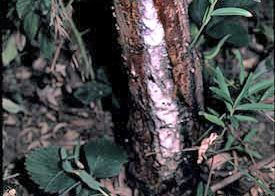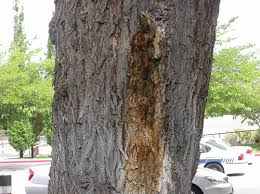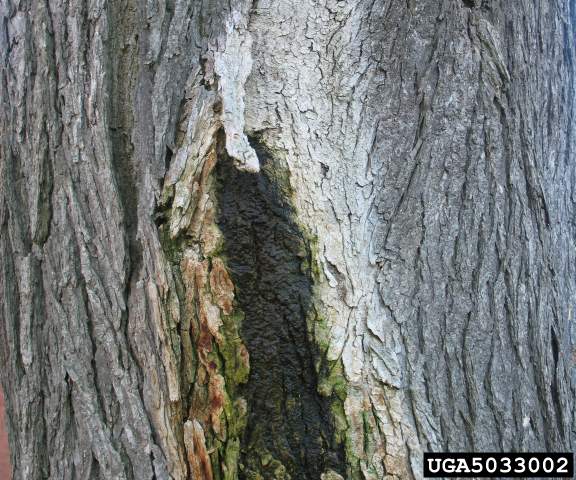Integrated Pest Management
Slime Flux
Many bacterial species
Hosts, Symptoms & Signs
- cottonwoods, ashes, elms and occasionally other trees
- caused by several species of bacteria
- two types of slime flux occur in Utah: infections of the heartwood and infections of the bark/cambial tissues
- general canopy dieback
- trunk has a wet spot and staining where bacteria are oozing from a fine crack
- slime flux infections of the cambium can kill trees within 1 - 2 years; trees with heartwood slime flux infections can live for a long time
- oozing from tree can kill turf or plants below
Disease Cycle
- bacteria enter the trunk through small wounds and feed on sap
- bacteria produce gases, such as carbon dioxide, that build up under the bark, creating pressure
- eventually the bark will crack and a bacterial ooze is released
IPM Recommendations
- Prevent tree stress. Trees stressed from drought, soil compaction, insect feeding or plant pathogens may die within a few years of slime flux symptoms appearing.
- Keep trees well watered and fertilized.
- Avoid damaging the trunk to minimize entrance points for bacteria.
- There is no cure for heartwood slime flux infections.
- Prune affected branches, etc., of trees with a bark/cambial infection.
- Pruning requires catching the disease early; advanced stages of cambial infection in the main stem cannot be reasonably removed without damaging the tree.
- Plant resistant trees.




